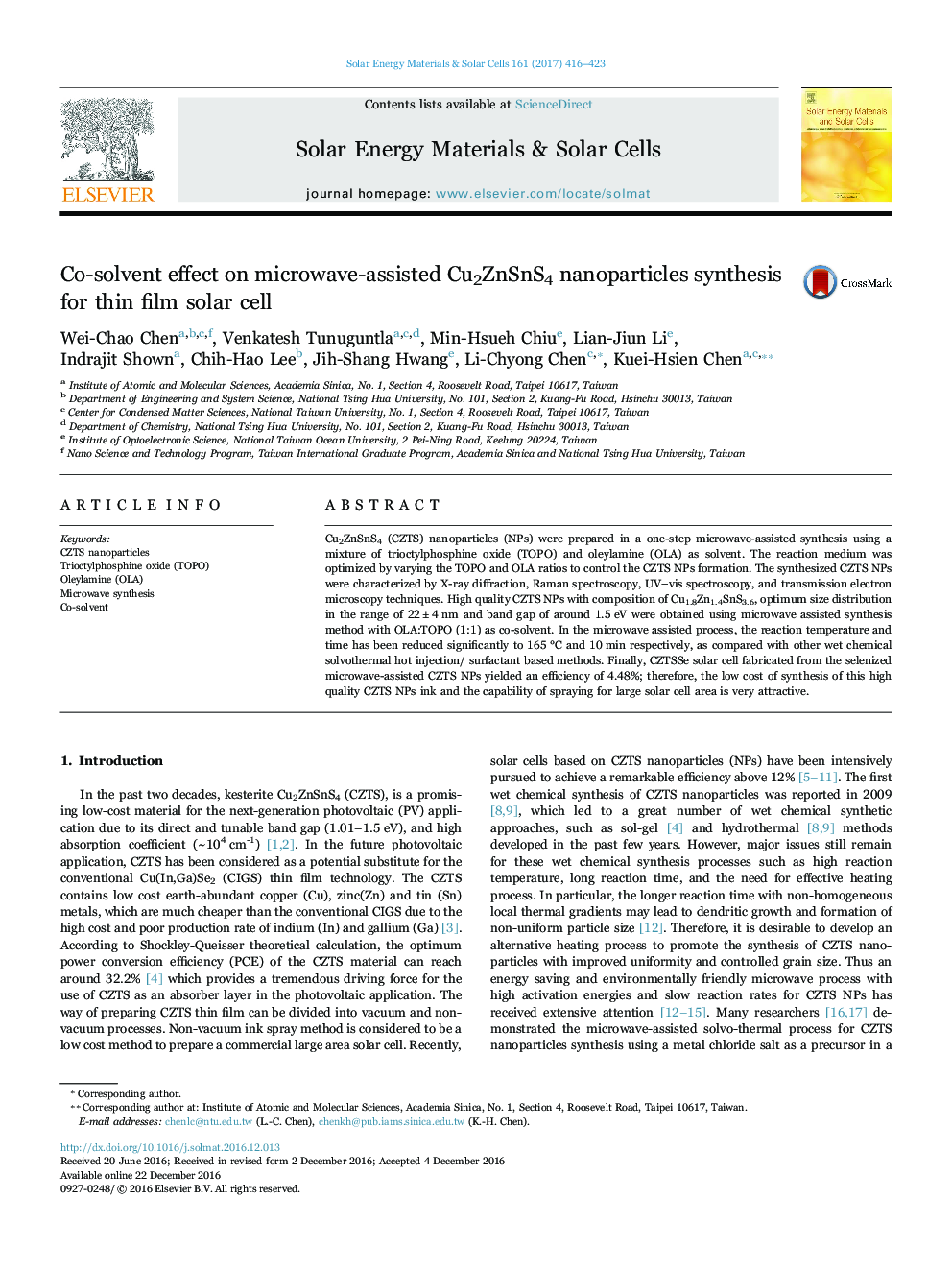| Article ID | Journal | Published Year | Pages | File Type |
|---|---|---|---|---|
| 6457068 | Solar Energy Materials and Solar Cells | 2017 | 8 Pages |
â¢Cu2ZnSnS4 (CZTS) nanoparticles were prepared by micro wave assisted synthesis.â¢1:1 ratio of trioctylphosphine oxide and oleylamine used as a mixed solvent.â¢Co-solvent effect shows improvement in the CZTS NPs (nanoparticles) formation.â¢NPs with Cu1.8Zn1.4SnS3.6 composition and 1.5 eV band gap have been obtained.â¢CZTSSe absorber has a bi-layer structure and solar cell shows 4.48% efficiency.
Cu2ZnSnS4 (CZTS) nanoparticles (NPs) were prepared in a one-step microwave-assisted synthesis using a mixture of trioctylphosphine oxide (TOPO) and oleylamine (OLA) as solvent. The reaction medium was optimized by varying the TOPO and OLA ratios to control the CZTS NPs formation. The synthesized CZTS NPs were characterized by X-ray diffraction, Raman spectroscopy, UV-vis spectroscopy, and transmission electron microscopy techniques. High quality CZTS NPs with composition of Cu1.8Zn1.4SnS3.6, optimum size distribution in the range of 22±4 nm and band gap of around 1.5 eV were obtained using microwave assisted synthesis method with OLA:TOPO (1:1) as co-solvent. In the microwave assisted process, the reaction temperature and time has been reduced significantly to 165 °C and 10 min respectively, as compared with other wet chemical solvothermal hot injection/ surfactant based methods. Finally, CZTSSe solar cell fabricated from the selenized microwave-assisted CZTS NPs yielded an efficiency of 4.48%; therefore, the low cost of synthesis of this high quality CZTS NPs ink and the capability of spraying for large solar cell area is very attractive.
